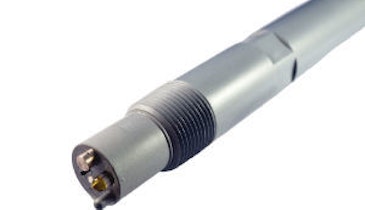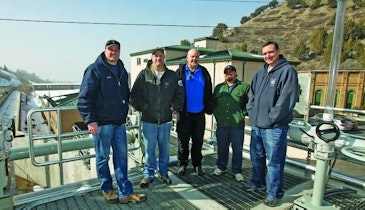In many reverse osmosis RO systems, the absence of an oxidant or biocide leads to extreme biofouling, resulting in rapid performance degradation and shortened membrane life. To prevent biofouling, chlorine (Cl₂) is often used due to its ability to eliminate most pathogenic microorganisms. However, in RO systems, membranes are easily damaged by chlorine in the feed water. Chlorine damage to the membrane can lead to lower salt rejection and poor-quality permeate, which will result in expensive membrane replacement and downtime.
To protect the membranes, it is necessary to keep the chlorine concentration very low. Sodium bisulfite is often used to reduce the chlorine going into the RO. Correct dosage of sodium bisulfite is critical. Bisulfite also reacts with dissolved oxygen in the water which leads to an increased anaerobic biological growth with the potential to rapidly foul the systems. Since chlorine concentration can also change, it can be challenging to get the correct bisulfite dosage relative to the chlorine concentration.
This also means that monitoring low concentrations of chlorine and bisulfite is difficult. Traditional analytical methods are limited in terms of range, accuracy, precision and ease of use. Excessive bisulfite decreases pH, which will cause the ORP reading to increase, even if no chlorine is present. The control system will respond by adding even more bisulfite, eventually followed by biofouling. Thus, an accurate system to analyze bisulfite independent from pH is required.
Additionally, residual chlorine monitoring requires a very sensitive, accurate and easy-to-use chlorine test. Existing technologies – such as colorimetric DPD methods or amperometric titration – are often not satisfactory for efficient dechlorination control due to insufficient accuracy at very low chlorine concentrations, potential sample matrix interferences or a cumbersome test procedure.
The solution
Accurate testing of bisulfite and residual chlorine is essential to monitor the efficiency of the dechlorination process and to ensure longer membrane life. Hach developed a new test system based on fluorescence technology for very low free and total chlorine concentrations (2-100 ppb), as well for bisulfite (6-500 ppb).
The method is as easy to perform as any Hach’s colorimetric test, with much higher sensitivity, providing highly accurate results at below 20 ppb Cl₂ and in the full range of bisulfite.
The benefits
Chlorine and bisulfite testing is an essential part of maintaining a well-running RO system. Regular, accurate monitoring of these parameters helps protect RO membranes from unwanted oxidation to extend membrane life.
Hach’s new DR1300 FL fluorometer is an easy-to-use, portable system for fast testing of residual chlorine and bisulfite onsite, as well as verification of process analyzers like the ULR CL17sc.
The DR1300 FL provides highly accurate chlorine and bisulfite results below 20 ppb to minimize biofouling and ensure less damage to the membranes, resulting in less frequent replacement, less maintenance and less downtime, according to the manufacturer.
Hach’s broad line of instrumentation and chemistries have been carefully crafted for more than 80 years to make water analysis better, faster, simpler, greener and more informative. Hach products can be found across the entire globe and serve industries ranging from municipal drinking and wastewater to food, beverage and power, and every other category that touches water.
800-227-4224 | www.hach.com





